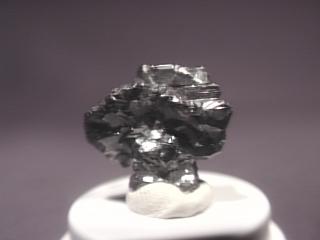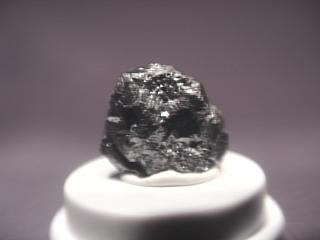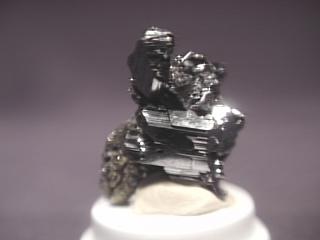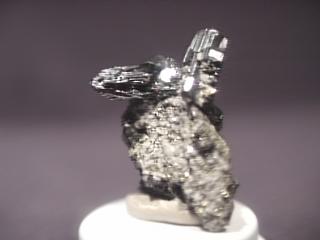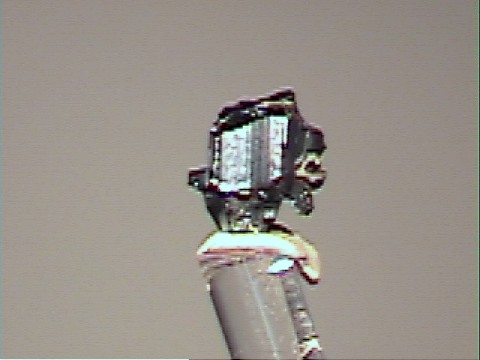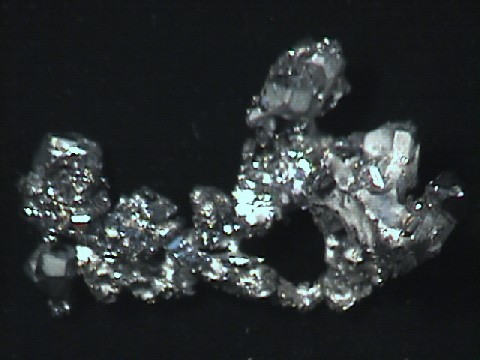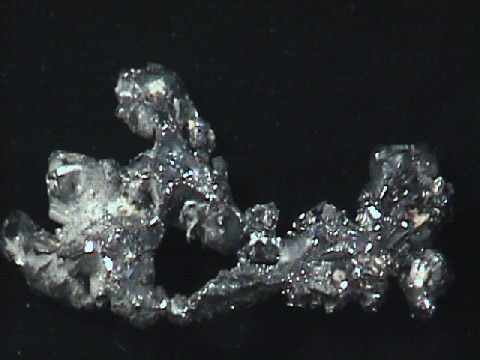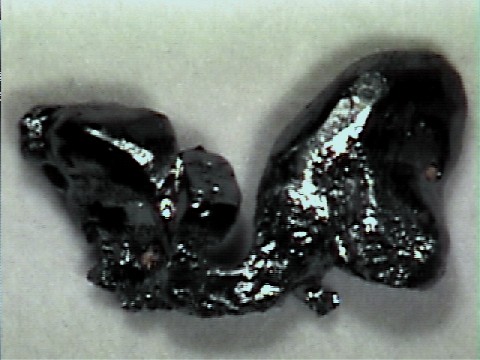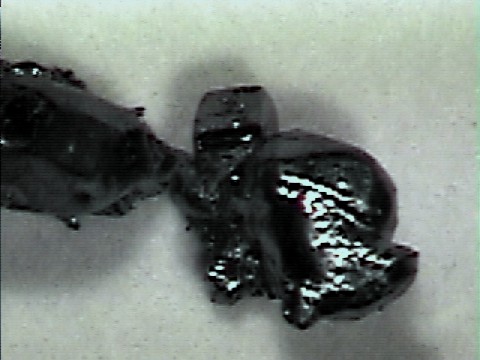 THE MINERAL STEPHANITE
THE MINERAL STEPHANITE
- Chemistry: Ag5SbS4, Silver Antimony Sulfide
- Class: Sulfides
- Subclass: Sulfosalts
- Uses: An ore of silver and as mineral specimens.
- Specimens
Stephanite is an uncommon silver bearing mineral that is named after a onetime Archduke of Austria, Victor Stephan.
Although not a well known ore of silver, it is never-the-less a locally important ore in some mines.
Stephanite typically forms nicely shaped crystals that are tabular to short prismatic.
Its crystals can have a pseudohexagonal outline making them look like crystals
of
polybasite, a closely related mineral.
Stephanite lacks polybasite's rhombic striations on its pinacoidal faces, good cleavage and the red flashes.
PHYSICAL CHARACTERISTICS:
- Color is an iron black to dark gray.
- Luster is metallic.
- Transparency: Crystals are opaque.
- Crystal System: Orthorhombic; 2 m m
- Crystal Habits include tabular or short prismatic crystals that are dominated by prominent pinacoidal faces.
Crystals are sometimes intergrown and form pseudohexagonal plates.
Also as disseminated grains and massive.
- Cleavage is poor in two directions.
- Fracture is conchoidal to uneven.
- Hardness is 2 - 2.5
- Specific Gravity is approximately 6.2 - 6.3 (heavy even for metallic minerals)
- Streak is a black.
- Other Characteristics: Dark coating can often form after prolonged exposure to light (can be removed by ultrasonic treatment) and crystals tend to be striated perpendicular to the prominent pinacoids.
- Associated Minerals include silver,
proustite,
pyrargyrite, polybasite,
sphalerite, quartz,
barite, calcite,
pyrite, fluorite,
galena,
tetrahedrite
, acanthite
and other silver sulfide minerals.
- Notable Occurrences include Sonora, Mexico; Freiberg, Saxony, Germany; Colorado, California and Comstock, Nevada, USA; Atacama, Chile;
Cobalt, Ontario, Canada; Cornwall, England and Bolivia.
- Best Field Indicators are good crystal habit, density, softness, association with other silver sulfosalts and lack of cleavage.
 THE MINERAL STEPHANITE
THE MINERAL STEPHANITE
